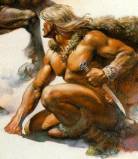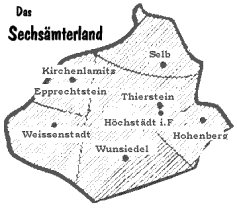
I wanted to include a brief “primer” of the ancient Germans. Most of us are not too familiar of our very distant forefathers.
In the early history of the
Germanic lands many different tribes migrated to settle the area. As descendants
of the Germans who in turn migrated to America we may wonder about our ancient
ancestors and their various tribes.
During the last three years I have been gathering information if the ancient Germans tribes. In the not too distant future my plans include a more details probe into the specific tribes, their history and the lands that they occupied.
The Germans are defined as a great ethnic complex of ancient Europe, a basic stock in the composition of the modern peoples of Germany, Switzerland, Austria, N. Italy, the Netherlands, Belgium, Luxembourg, Liechtenstein, Sweden, Norway, Denmark, Iceland, North and central France, Lowland Scotland and England. From archaeology it is clear that the Germans had little ethnic solidarity; by the 7th century B.C. they had begun a division into many peoples. They did not call themselves Germans
The Celts are the first recorded
peoples of the territory now known as Germany. Scandinavian tribes gradually
migrated from the north and conquered them. These northern people then settled
the territory between the Elbe and Oder rivers and turned to agrarian pursuits.
Although the earliest mention of the Germans is by a Greek navigator who saw
them in Norway and Jutland in the 4th century BC, their real
appearance in history began with their contact with the Romans. The chief
historical sources for the culture and distribution of the Germans are Tacitus’
Germania and Agricola and the remnants in later ages of early Germanic
institutions. In the 1st century BC the area comprised an estimated 4
million people and land had become a scarce commodity. Because of this
overpopulation, several tribes in the region began to emigrate including the
Visigoths to Spain, the Vandals to North Africa, and the Angles and Saxons to
England. Other tribes such as the Teutons and Cimbri were defeated and
destroyed.
Between 12 BC and 16 AD, the Romans tried to conquer the
Germanic tribes but only a small portion of southwestern Germany came under
their control. In AD 9 Arminius (Hermann), who had been trained in the Roman
service, headed an anti-Roman group of Cherusci and this led to the disastrous
defeat and annihilation of three Roman legions under the command of Varus in the
famous Battle of the Teutoburg Forest.
Some of the Germanic Tribes included:
Alans, Alemanni, Ampsivari, Angivarii, Angles, Ansivarii, Artrivari,
Atuatici, Bajuwaren, Batavians, Belgii, Bructeri, Burgundians, Buri, Caeracates,
Cannenfates, Casuarii, Cenni, Chamavi, Chatti, Chasuari, Cherusci, Cimbri,
Coldui, Condrusi, Canunefates, Coeresii, Dulgibines, Eburones, Fali, Franks,
Frisians, Gepidai, Getae, Goths, Gugerni, Heruli, Hermionies, Hermunduri,
Herules, Huns, Ingavones, Istavones, Juthons, Kugern, Latobrigi, Longobards,
Lygii, marcomanni, Marini, Marsi, Mattiaci, Menapi, Narisci, Nemetes, Nervii,
Northvolkers, Ostrogoths, Peucini, Poemones, Quadi, Rauraci, Rugii, Salains,
Saxons, Scardosi, Schryi, Scorolisi, Seducii, Semnones, Sigambri, Suevi,
Tenchteri, Teuteri, Teutons, Thuringians, Treveri, Triboci, Tubanti, Tulingern,
Tungri, Twihaten, Ubii, Ulmerugi, Usippi, Vandals, Vangiones, Varini, Visigoths
and don’t forget our beloved Vikings
and their later Scandinavian conquests .
.
My recent research of the old German tribes (Germanen) has led me to meet some very gifted and educated people. I have received valued opinions from such learned professors as Dr. J. Haberstroh, Prof. Dr. Peter Herz and Dr. Christof Flugel. All are archaeologists and experts in their field.
The more common spellings of our name such as Küspert, Kispert, Kisseberth, Kissenberth, Kisaberth and Kisabeth have all evolved from the medieval surname of Küschwert in the Fichtelgebirge area of NE Bavaria. The approximate written date is around 1400. In genealogical respect the 15th century is an excellent beginning in personal surname history but in an actual timeline this era is relatively recent. Who were the ancient ancestors of our Küschwerts and where did they come from? We can only speculate but offer some valued opinions and theories based on facts that may shed some light to the tribes associated with our specific family history.
On most maps of ancient Germany the tribe living in close proximity of the Fichtelgebirge was the Narisci, a subgroup of the larger Marcomanni tribe. I have received conflicting reports on the ancient inhabitants of the area. Most experts agree that the Fichtelgebirge was not populated or at best, sparsely populated, until much later when migrating tribes settled the area.
The first mention of our Küschwert name is in the unseeded area. This is located in the Oberfranken area of Bavaria but also touches the Oberpfalz region. To this day some people of this area consider themselves more as ethnic Franconians while others are committed to the Bavarian ethnicity. Each village seems to have its own dialect.
A very close friend of mine, Mr. Dieter Goeschl of Freising, Bavaria has been my “Bavarian mentor” for over a year. We have corresponded over the Internet. He is a very knowledgeable native Bavarian or Alt-Baiern. Dieter is with Texas Instruments and has taught me a great deal of Bavarian history, customs and even some useful phrases. I look forward to our meeting in June of 2002. He states that most scientists of history, archeology and linguistics agree that the Bavarian tribe (Bajuwaren) was comprised of the following:
It is now generally believed that the Bavarians are the descendants of the “lost” Germanic tribe known to the Romans as the Marcomanni. Considered the most important of the southern Suevic tribes, they were led by a brave noble, Marbod, who took his people to the east settling into the region of present-day Prague, Czechoslovakia. It is believed that the Macromanni stayed in Bohemia for about 500 years emerging as the Bajuwaren tribe.
In November 2001, I received a nice email from a Mr. Peter Ertel, Webmaster of www.bairische-sprache.org. He has supplied some very interesting material on our history. This is what he had to share:
In the beginning of the first millennium (1000 AD) settlers came to the Fichtelgebirge from two directions: There were true Bavarians from the south and Franconians from the west. Regensburg and Bamberg were the seats of the bishops. Die markgrafen auf dem Nordgau, die Diepoldinger, leiteten aus dem bayerischen Raum von Süden her mit ihren Ministerialen im 11. und 12. Jahrhundred die kolonisatorischen Arbeiten. You can still distinguish the two parts of the region by the local dialects. The following Franconian places on the language border to the Bavarian places southeast of them; Ortschften, Heinersberg, Pilgramsreuth, Niederlamitz, Hohenbuch, Raumetengrün, Reicholdsgrün, Weißenstadt Franken, Meierhof, Bischofsgrün, Warmensteinach, Weidenberg.
In the medieval history of the
Fichtelgebirge the Sechsämterland (six communities) consisted of the towns of
Selb, Wunsiedel, Hohenberg and Thierstein and the Franconian towns of Weißenstadt
and Kirchlenlamitz. The Sechsämterland Dialect, which belongs to the North
Bavarian Dialect, is still spoken in most parts of the Landkreis of Wunsiedel
today. The Sechsämterland belonged to the Egerland (first mentioned as ‘Regio
Egere in 1135 AD). The Egerlanders were North Bavarian settlers. Later the
counts (Burggrafen) of Nuremberg bought more and more parts of the west of the
Egerland. Until 1415 the western part, the Sechsämterland (including Wunsiedel
from 1285 on) belonged to the Nurembergers. Wunsiedel and the Sechsämterland
became a part of Franconia politically but there was no change in the
population, and the people kept their Bavarian dialect.
It is kind of strange that Wunsiedel and the Sechsämterland only “returned” to Bavaria when Franconia became a part of Bavaria in 1806, after the Napoleon wars, by force. Confusingly, ethnic Sechsämter-Bavarians who had lived in Franconia again became Bavarians. Politically Wunsiedel is still a part of Oberfranken but the people are Oberpfaelzer. Nowadays, strange as it is, some Sechsämterlanders believe that they are – or have become- Franconians.
Very simply; we have Küschwert ancestors that considered themselves as true Bavarians and Küschwert ancestors that were Franconians (considered settlements of various tribes including Alemanni, Franks, Thuringians, Bajuwaren, Slavs and Saxons.
When our ancestor Georg Kuschwert migrated west to Wertheim am Main in the mid 1550s his marriage or his son’s marriage introduced other possible Germanic tribes who had settled in what now is the Baden-Württemberg area. The smaller tribe called the Scardosi appeared to occupy this area about the time of Christ. Later, the larger Alemanni tribe occupied the Odenwald (SE of Frankfurt am Main). The Odenwald was the area between Wertheim and the southern portion of Hessen-Darmstadt where our Kisseberth ancestors lived. During the last years of the 6th century Alemanni troops were defeated by invading Franks. In the Hessen area the Chatti tribe were the early occupants perhaps even reaching to the northern Odenwald area.
In conclusion, we as present day descendants of the ancient ancestors of the medieval name of Küschwert may speculate as to our Germanic tribal origins. It is my belief that these are the following tribes associated with our past: